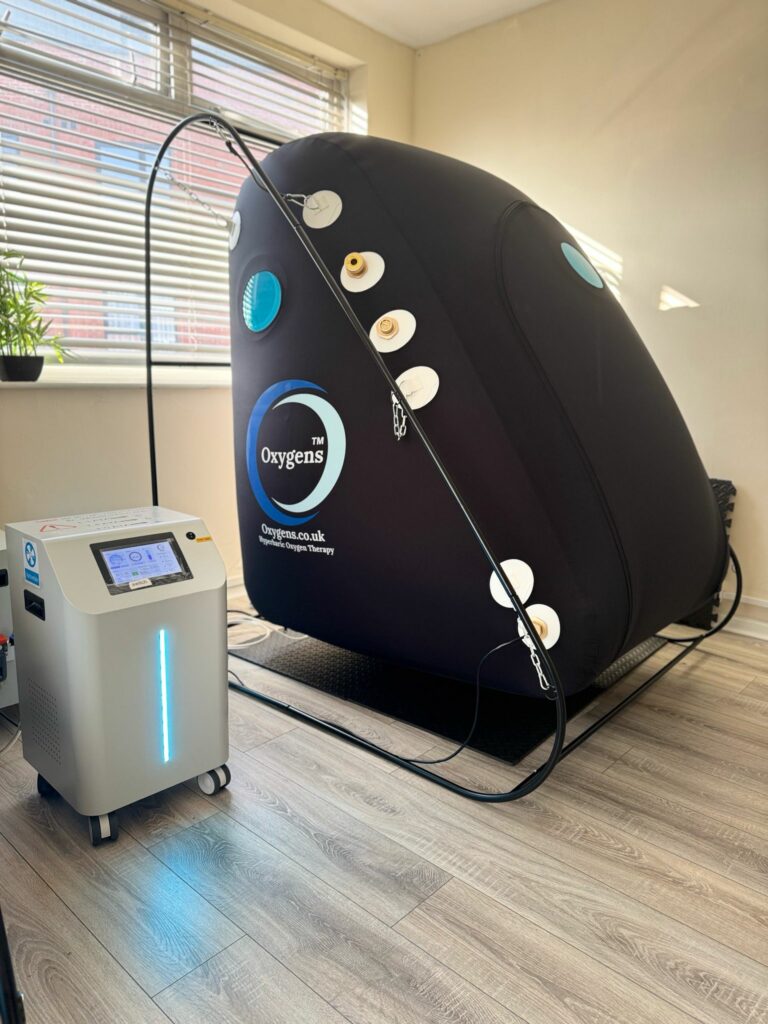In the UK, mild hyperbaric oxygen therapy (mHBOT) — typically operating at pressures up to or below 2.0 ATA — is not currently subject to direct regulation under the Pressure Systems Safety Regulations 2000 (PSSR), provided certain conditions are met.
Most notably, PSSR only applies when both of the following are true:
- The system operates at a pressure greater than 0.5 bar above atmospheric pressure (i.e. above 1.5 ATA), and
- It involves a “relevant fluid” (such as oxygen) that is stored in a pressure vessel under pressure — for example, compressed gas cylinders.
Many mHBOT systems, including our Oxygens chambers operating at 2.0 ATA, meet the first condition. However, because we use oxygen concentrators — which generate oxygen on demand and do not store it under pressure — we do not meet the second condition. There is no pressure vessel involved as defined by the regulations, and the system presents minimal stored energy risk, which is the core concern of PSSR.
Because of this, and because mHBOT is often delivered in wellness or holistic settings rather than as part of registered medical treatment, there is currently no dedicated UK regulatory body overseeing mHBOT facilities. The Care Quality Commission (CQC), for example, generally does not regulate mHBOT unless it is provided as part of a broader regulated medical healthcare service. Similarly, the MHRA (Medicines and Healthcare products Regulatory Agency) is only involved if a device is marketed as a medical device or if medical claims are made. Our products, which do not use compressed gas, are for therapy purposes only – they do not constitute medical treatment.
No Specific Regulation Doesn’t Mean No Responsibility
While the absence of a specific regulator means that mHBOT systems using oxygen concentrators are not governed by PSSR or a central licensing body, providers are still legally and ethically responsible for ensuring the safety of clients and staff.
All providers must comply with:
- The Health and Safety at Work Act 1974
- PUWER (Provision and Use of Work Equipment Regulations)
- COSHH (Control of Substances Hazardous to Health), especially regarding fire risks associated with enriched oxygen environments
- General risk assessment and emergency procedures under workplace safety regulations
This includes implementing clear operational protocols, regular maintenance, fire safety measures, and staff training.
This blog post talks more about what wellness businesses offering mild hyperbaric therapy should do.
Even though the risks in mHBOT are lower than in medical-grade hyperbaric systems, safety remains paramount.
In Summary
Mild hyperbaric oxygen therapy under 2.0 ATA, when delivered using oxygen concentrators and without stored compressed gas, is not regulated under PSSR in the UK. PSSR only applies when a system both exceeds 0.5 bar above atmospheric pressure and stores gas under pressure — conditions not met by oxygen concentrator-based mHBOT.
There is currently no specific governing body for mHBOT, but legal duties under general health and safety law still apply. Operating responsibly — with thorough safety systems, staff training, and transparent communication — is essential to ensuring a high standard of care.
At Oxygens, safety is at the core of our chamber design — even though our systems fall outside the scope of the Pressure Systems Safety Regulations (PSSR), we build to exceed industry expectations. All of our chambers come equipped with a triple-valve safety system as standard. Only one valve is needed to regulate pressure, but we include two additional backup valves to ensure absolute reliability. In the event of an emergency, our chambers also feature a quick-release pressure valve, allowing for full depressurisation and safe exit in under 60 seconds — a benchmark widely recognised in HBOT safety practice and aligned with guidance from standards such as NFPA 99 and the European Code of Good Practice for Hyperbaric Oxygen Therapy, which emphasise rapid evacuation and emergency readiness. All critical components — including the high-frequency welded TPU chamber material, medical-grade masks, oxygen pipes, and connectors — are carefully selected for their safety, durability, and reliability in therapeutic environments.

